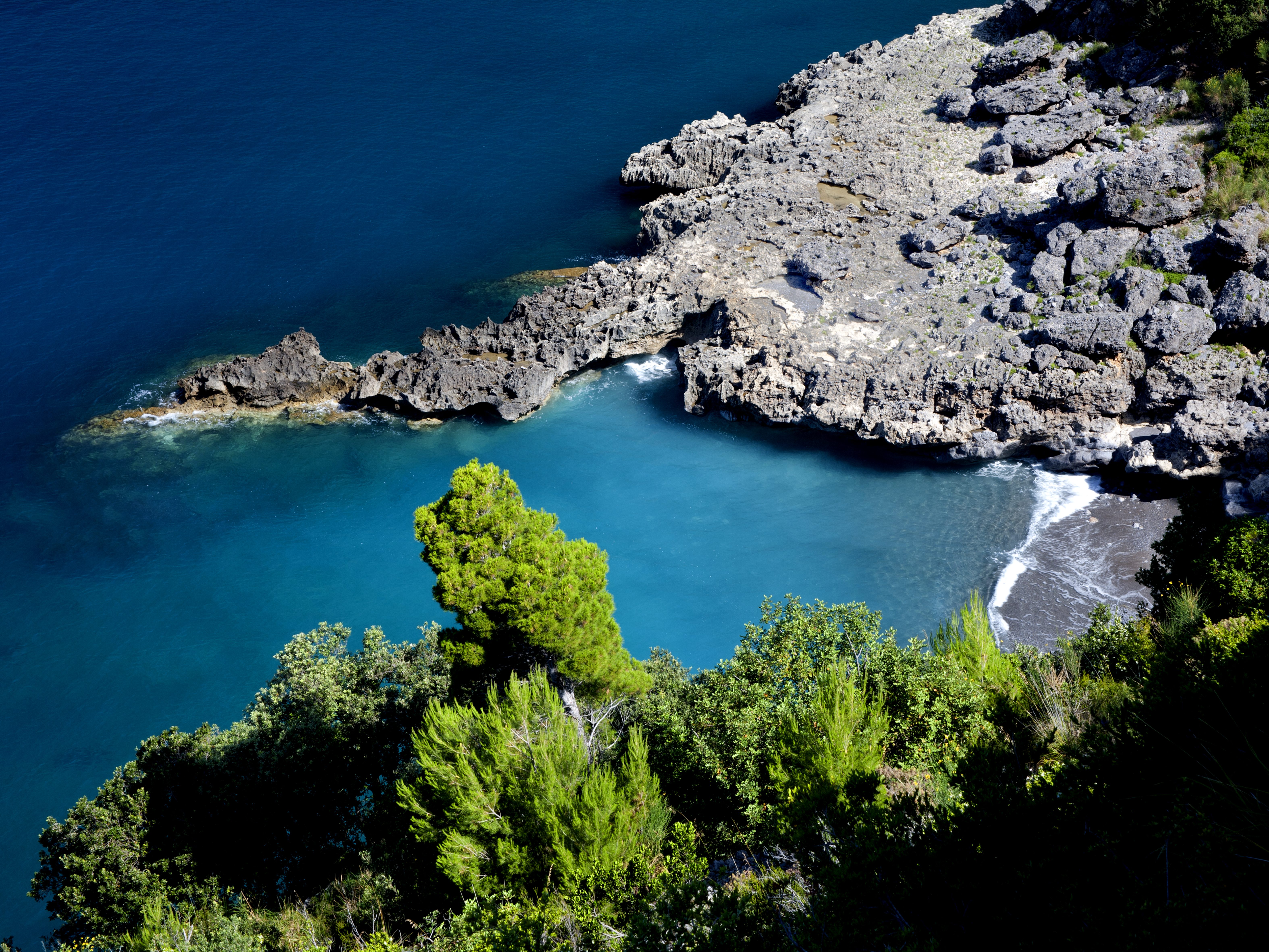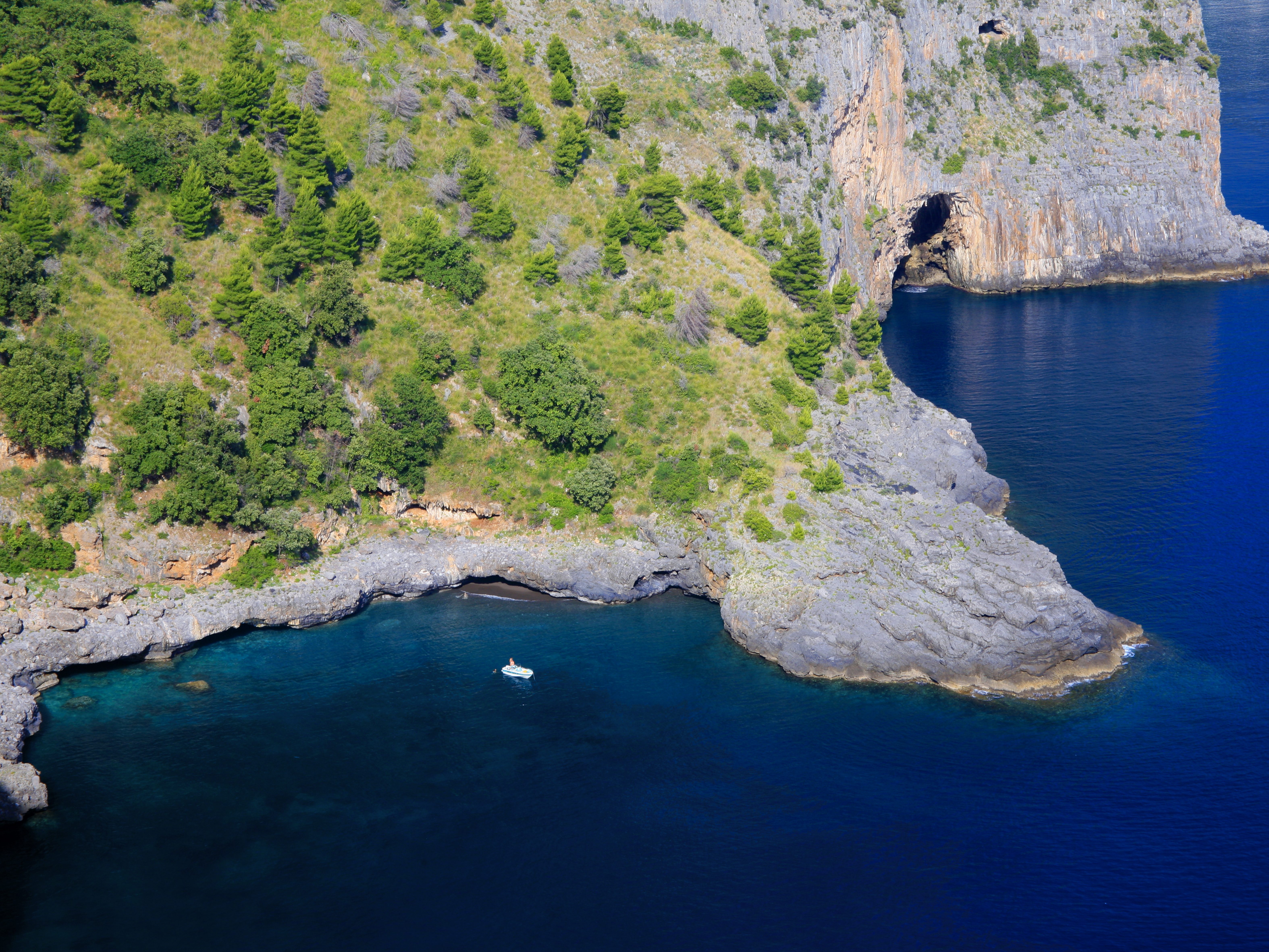Discovering the pearl of Thyrrenian, Maratea itinerary
Back in history
The origins of Maratea go back a long way, with a strong Greek influence that can already be felt from the place name, which is said to derive from Marathia, a Hellenic term meaning a place where fennel grows, but for the Greeks it was also known as Thea maris, the Goddess of the Sea.
The Tyrrhenian city guards archaeological treasures on land and on the seabed. It has always been on the ancient routes of Greek and Roman ships, so much so that its coast has been a landing place for various peoples since ancient times.
Ancient migrants used to stop at the nearby island of Santo Janni, where a trove of Greek and Roman anchors and the remains of tanks used for the production of garum, a sauce made from fish entrails used by the Romans to flavour food, have been discovered.
Maratea’s ancient history can not only be discovered along the coast, but also at another site of historical interest on Mount San Biagio, in a place known as the castle. Basilian monks founded a monastery here around the 6th century and later refugees from Blanda who were forced to leave their town took refuge here. Over the centuries, this strategically located area was also inhabited by the Lombards and Normans, who gradually transformed the area into a fortified citadel.
In the area there was also the first inhabited settlement of Maratea Superiore. Later on, due to the demographic growth of the population, the inhabitants migrated downstream around the 11th-12th centuries, forming Maratea Inferiore, the present-day historical centre. The two settlements remained distinct until 1808, when, following the French attack of 1806, the walls and most of the fortified town of Maratea Superiore were destroyed, so that the survivors were aggregated with the population of Maratea Inferiore to form a single municipality, today’s Maratea.
In fact, the history of the pearl of the Tyrrhenian Sea is said to have already begun in prehistoric times, since lithic tools, clay material and the remains of huts have been found, bearing witness to the presence of man in the area forty thousand years ago.
Further evidence of the existence of the settlement in different periods of history are the coastal watchtowers, built by the Saracens along the cliff to defend themselves from sea raids. The most well-known are Torre Apprezzami l’asino, Torre dei Crivi, Torre Acquafredda, Torre Filocaio, Torre Santavenere and Torre Caina, which formed a substantial defensive system.
Then, in the hamlet of Castrocucco, on a hill overlooking the coast of Maratea and the entire Gulf of Policastro, you can marvel at the fascinating ruins of a castle subject to monumental protection by the Ministry of Cultural Heritage.
The numerous finds unearthed on the seabed near the islet of Santo Janni, such as amphorae, anchors, vessels and other artefacts, can now be seen in the exhibition “Dal mare alla terra. Archeologia subacquea a Maratea” (From the sea to the land. Underwater archaeology in Maratea) in the halls of the 18th-century Palazzo De Lieto, which together with Villa Nitti, once the summer residence of the great Lucanian statesman, are two of the most valuable artistic sites in the area.



The city of 44 churches and of Christ the Redeemer
Maratea is known as the city of 44 churches. There are many places of worship scattered throughout its territory, twenty of which are dedicated to the Virgin Mary, so much so that the pearl of the Tyrrhenian Sea can be defined as a Marian city, although the real devotion that characterises Maratea is that linked to its patron saint: Saint Blaise The “beautiful lady” of the Tyrrhenian Sea has an irregular territory, which does not develop homogeneously only in the town, but expands up to Mount San Biagio, marked by the symbol of the town: the statue of the Redeemer. The Christ of Maratea, commissioned by the industrialist Rivetti in 1965 and created by the artist Bruno Innocenti, stands proudly at the highest point of the town, dominating the entire Gulf of Policastro, with its blinding white colour created by the purity of Carrara marble and its 22 m height standing out against the intense blue of the sky. Accessible via a path of winding bends with breathtaking views, it is second in size only to the statue of Christ in Rio de Janeiro.
An enchanting coast
From Maratea’s highest point, its territory slopes down to the coast of Castrocucco, passing the port and the hamlets of Fiumicello, Brefaro, Acquafredda, Massa, Marina, Cersuta and Santa Caterina. There are many beaches along the coast, some of which are small and accessible only by sea, as well as natural caves, such as the Grotta delle meraviglie (Cave of Wonders) in Marina di Maratea, a unique natural spectacle with stalactites and stalagmites created by the relentless action of the water. Its thirty kilometres of coastline have been awarded the Blue Flag several times and are a veritable Eden on earth, wild and unspoilt at times, with a play of ravines, gorges, inlets and delightful coves that offer an exclusive relationship with nature. On the Acquafredda stretch of coast there are the beaches of Anginara and Luppa, divided by a cliff with dark sand and pebbles, Grotta della Scala, Porticello and Marizza. One of the most popular has always been the d’u Nastru beach in Cersuta and the I Vranne beach in Porto. The Fiumicello and Castrocucco beaches are larger than the others and more suitable for children, given the ease with which they can be reached. Distinguished by the dark colour of its sand, the Spiaggia Nera (Black Beach) is framed by dense Mediterranean vegetation that extends almost to the sea. The beaches in the Marina di Maratea district, including Illicini, Cala Jannita and Macarro, are noteworthy for their morphological peculiarities and beautiful landscapes.
The unique Secca beach has a shallow seabed and rocky outcrops, which in the past were the cause of several shipwrecks, as evidenced by the many archaeological finds from the sea.
The port
The port was the setting for trading, especially during the 18th century, Maratea’s golden years, and is now one of the most attractive tourist ports in the Mediterranean. It can even be accessed by large boats and is a link between the Tyrrhenian Sea and the hinterland. It is the starting point for a number of trips to admire the most secret corners of the coast, beaches that can only be reached by sea and for various activities such as night-time squid fishing. Today it is an excellent tourist destination, thanks also to the many bars and restaurants overlooking the picturesque bay.

Typical products
Last but not least, we must mention the typical products that make Maratea a paradise not only for the eyes but also for the palate. How could we not mention the red, juicy and gigantic tomatoes, mozzarella, treccia and caciocavallo cheeses from Massa, as well as gilò (the elongated red aubergine), carob, salted capers, salted anchovies, aliciocculi fish, and garum once produced on the island of Santo Janni. These products were the first to obtain the municipal denomination ‘Maratea De.C.O.’, a mark that highlights their link with the history and traditions of the pearl of the Tyrrhenian Sea.





























